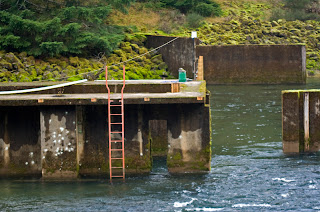The first guest to be introduced was MIT’s Alfred P. Sloan Professor of meteorology, Richard Lindzen. He clearly stated his opinion as a strong skeptic of global warming. The second guest, England’s Christopher Booker, a columnist at the UK’s Sunday Telegraph used only the last decade or so to make his point about why everyone should be skeptical of scientific studies. Another guest from Denmark chimed in with a view less skeptical, although not challenging.
The discussion progressed rather uneventfully as you would expect from scholars and journalists at the beginning of a radio program, that is until Kenya’s Michael Tiampati, a self-described pastoralist spoke next. He explained that the people he works with don’t have PhDs in science, but they do have indigenous knowledge of the land that has allowed them to cope with the semi-arid conditions for generations. He continued saying that they may not have scientific proof, but they have observed that conditions are becoming less hospitable and the people are no longer able to predict changing weather conditions such as droughts that they had been able to do in the past. Then he made a most crucial mistake by saying that the pastoral people call this the ‘curse of the West.’
Lindzen’s reply was caustic. He accused anyone who says that pastoralists can predict the weather as being extremely dishonest. He deemed Tiampati’s claims absurd. He then said that no scientist that he knows of would ever say that climate change has affected the Kenyan pastoralists.
As Tiampati attempted to clarify his previous statements, Lindzen, chortling in disbelief, threatened to hang up the phone, an act in which he followed through before Tiampati could complete his thoughts. Tiampati finally did finish by saying that they have wise people who have studied nature, who understand the rhythms of nature, and they need to be listened to.
Christopher Booker’s reply was to scoff and accuse the host of the show of choosing such a poor representative from Africa to speak. He then began to list people he deemed as suitable for the discussion, all who have ‘spoken very eloquently’ on the subject. I understood this to be ‘Africans who have a more Western perspective,’ and who would never advocate anything that would hinder Africa’s development, economic growth and chances to become more like developed Western nations - like solar panels and windmills which, according to Booker, are totally useless.
Next to enter the conversation was Senior Fellow at the Cato Institute Patrick Michaels, climatologist. He dismissed Tiampati succinctly saying that it is impossible that any human actions could have induced climate change affecting pastoral people in Kenya and then proceeded in beginning a dogmatic lecture regarding the economy.
Tiampati was all but left behind in for the rest of the hour-long discussion. I was appalled by the absolute hubris and disrespect shown by Lindzen, Booker and Michaels toward Tiampati. Lindzen demonstrated that although he may be intelligent, he has no ability to communicate his views effectively with anyone who does not hold a PhD in science, and more importantly, to listen to their views. Michaels dismissed anything that would not allow him to relentlessly drill in the point that capitalism appears to be his religion and the planet can regulate itself just as capitalist economies ideally should do. And Booker, who claims that asbestos is no different than talcum powder and poses no human threat, claims that no science has ever shown that second hand smoke causes cancer, and defends intelligent design by saying that Darwinians ‘rest their theory on blind faith,’ demonstrated the saying ‘one should never try to argue with someone who knows that they are right.’
Tiampati is the only one whose ‘database’ extends further back than any data collected by Western science. Tiampati is the only one that has been listening directly to people who have been intertwined with the land for countless generations. I do not doubt that those pastoral Kenyans possess ‘observational instruments’ far more sensitive to the changes in their particular environment than those instruments that Lindzen and Michaels have ever been privy. Yet Tiampati was laughed right out of the discussion. The wise people he referred to were not given the voice that he requested they be given.
This, Paul, is why you are so important. You have the PhD. You have the Western science. But you also have the type of wisdom that Tiampati and the Kenyan pastoralists possess. You have the legitimacy offered to Western thinkers that even the (in my opinion) absurd Christopher Booker was allowed, although his claims are ridiculous. (I for one have seen medical record after medical record after medical record regarding the links between 2nd hand smoke and asbestos and cancer when I had access to thousands of them when I worked at a law firm that represented one of the major tobacco companies. It doesn’t take a PhD to see the connections… but that is an entirely different story.)
I may see connections in the environments that I have chosen to know intimately, but I, like Tiampati will never have the legitimacy that you have to speak to the scientific community about what I have observed. You may have the desire to ‘abandon methodologies that have drummed into you through formal education.’ But please don’t. As John Berry replied – don’t discard, add. With the two perspectives you start to see a multi-dimensional view in a way that Lindzen will never achieve. How very powerful and necessary that will be!






